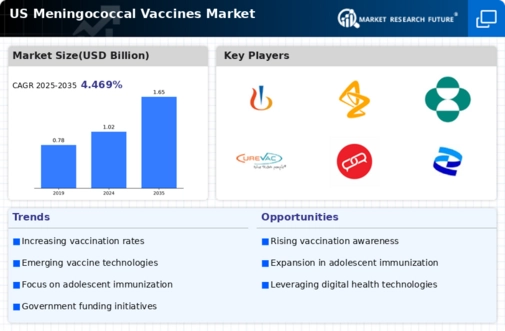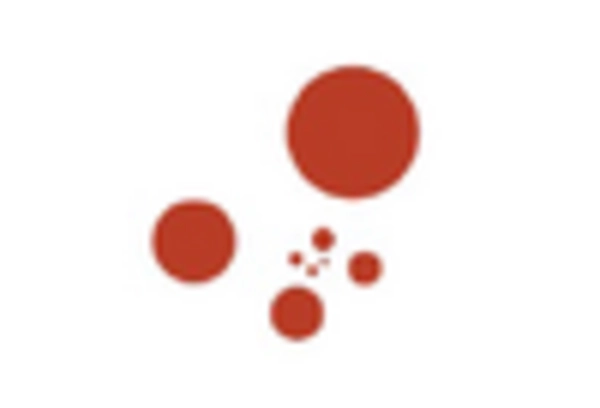Emerging Vaccine Technologies
Innovations in vaccine technology are transforming the meningococcal vaccines market. The development of new vaccine formulations, such as conjugate vaccines, has improved efficacy and safety profiles. These advancements have led to the introduction of vaccines that provide broader protection against multiple serogroups. Furthermore, research into mRNA technology, which has gained attention in recent years, may offer new avenues for meningococcal vaccine development. As these technologies evolve, they could potentially enhance immunization strategies and increase uptake rates. The introduction of more effective vaccines is likely to stimulate growth in the meningococcal vaccines market, as healthcare providers and patients seek the best preventive measures.
Government Initiatives and Funding
Government initiatives aimed at increasing vaccination coverage significantly impact the meningococcal vaccines market. Federal and state programs often allocate substantial funding to support vaccination campaigns, particularly in high-risk populations. For instance, the Vaccines for Children (VFC) program provides free vaccines to eligible children, thereby enhancing access to meningococcal vaccines. Additionally, public health campaigns funded by government agencies aim to educate communities about the importance of vaccination. These initiatives not only increase awareness but also drive demand for meningococcal vaccines, contributing to market growth. As funding continues to support vaccination efforts, the meningococcal vaccines market is expected to expand.
Public Health Education and Outreach
Public health education and outreach programs play a pivotal role in shaping the meningococcal vaccines market. These initiatives aim to inform the public about the risks associated with meningococcal disease and the benefits of vaccination. Schools, healthcare providers, and community organizations often collaborate to disseminate information, thereby increasing awareness and encouraging vaccination. The CDC and other health organizations actively promote educational campaigns that target parents and adolescents, emphasizing the importance of timely vaccination. As awareness grows, it is anticipated that more individuals will seek vaccination, thereby driving demand in the meningococcal vaccines market.
Increased Focus on Preventive Healthcare
The growing emphasis on preventive healthcare is a significant driver for the meningococcal vaccines market. As healthcare systems shift towards preventive measures, vaccinations are increasingly recognized as essential components of public health strategies. This trend is reflected in the rising number of vaccination programs and initiatives aimed at reducing the incidence of preventable diseases, including meningococcal infections. Insurance coverage for vaccines has also improved, making them more accessible to the population. As preventive healthcare continues to gain traction, the meningococcal vaccines market is likely to benefit from increased vaccination rates and a broader acceptance of immunization as a vital health practice.
Rising Incidence of Meningococcal Disease
The increasing incidence of meningococcal disease in the US is a critical driver for the meningococcal vaccines market. Reports indicate that the rates of invasive meningococcal disease have shown fluctuations, with certain serogroups, such as B and C, being particularly concerning. This rise in cases has prompted public health officials to advocate for higher vaccination rates, especially among adolescents and young adults. The Centers for Disease Control and Prevention (CDC) recommends routine vaccination for preteens and teens, which has led to a growing awareness of the disease's severity. Consequently, the meningococcal vaccines market is likely to experience growth as healthcare providers emphasize the importance of vaccination in preventing outbreaks.

















Leave a Comment